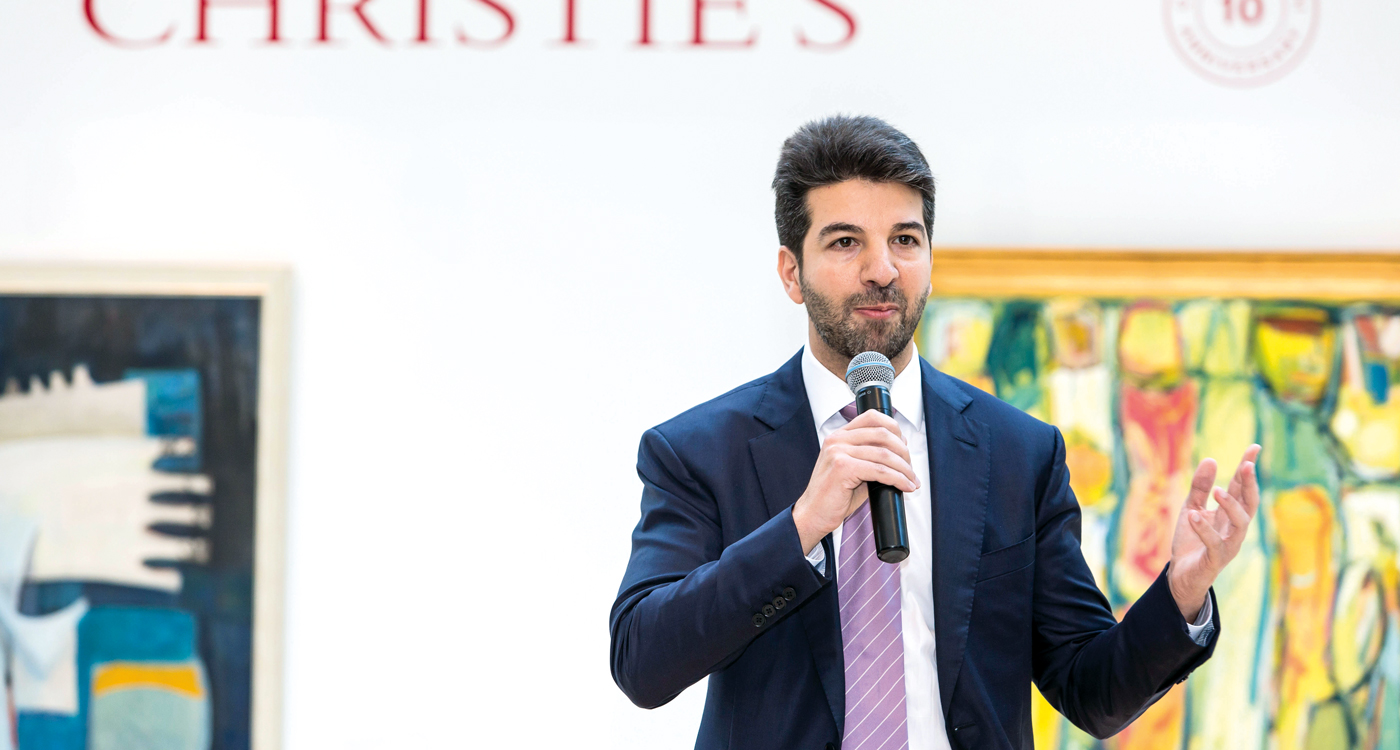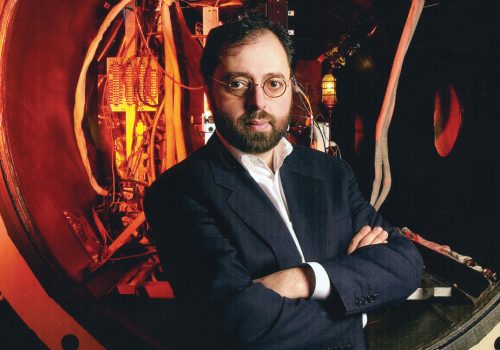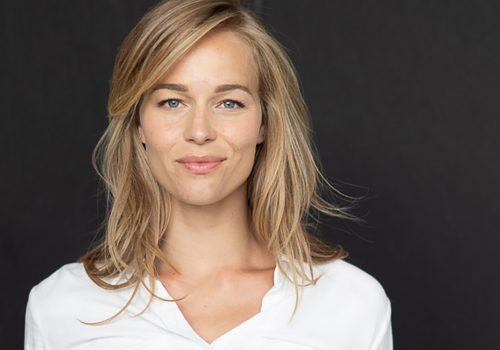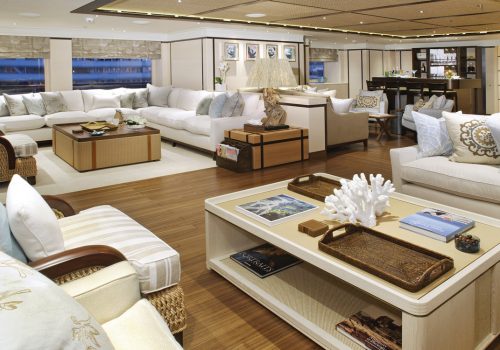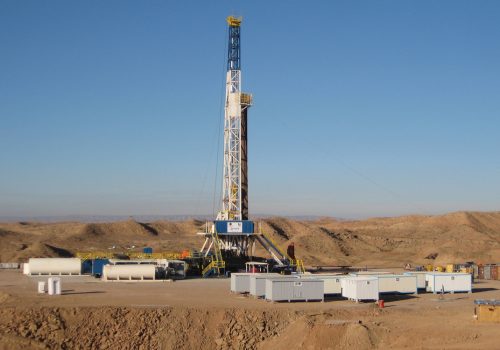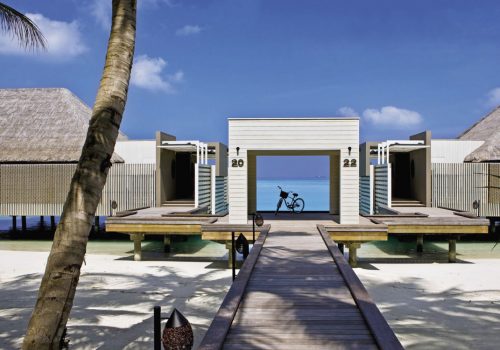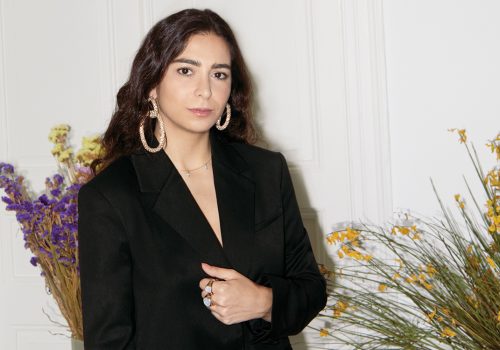Back in 2007, an untitled painting by Iraqi artist Dia Al Azzawi was sold at a Christie’s auction for 20,000 USD. Fast-forward nine years, and ‘Mawt (Your Wedding is Death)’ by the same artist, fetched a whopping 235,000 USD. That’s a significant and rapid rise in value by most accounts, even when inflation and normal appreciation are factored in. The reason? It might have something to do with Christie’s eleven-year tenure in the region, according to Christie’s Middle East Managing Director & Deputy Chairman Michael Jeha, who has seen this – and many other artists’ – valuation skyrocket since the historic British auction house set up shop in Dubai eleven year ago.
“There’s no doubt that overall values have increased. Not everyone likes that, like everything in life,” he reflects over mint tea at Beirut’s Albergo Hotel. “Some buyers are frustrated that you can no longer get Paul Guiragossian for 15,000 USD.”
But while some art collectors are longing for the past, the upward trend is pleasing a whole new audience, and raising the profile of Middle Eastern art on a global level. It’s all part of a strategy that aims to bring cohesion to the regional art market.
“When we first began, it was a very localised market, Syrians buying Syrian, Lebanese buying Lebanese, Egyptian buying Egyptian. Now everyone is buying each other’s art. We really helped to internationalise the market, which is really the role of Christie’s, to bring Middle Eastern art to a global audience,” explains Jeha, who has been with the company for the last 19 years (the first eight were in London, where he grew up).
WE REALLY HELPED TO INTERNATIONALISE THE MARKET, WHICH IS REALLY THE ROLE OF CHRISTIE’S, TO BRING MIDDLE EASTERN ART TO A GLOBAL AUDIENCE.
That’s not to say Christie’s move into the Middle East market it was all part of a meticulously planned roadmap. In fact, when it first opened in 2005, Christie’s outpost in Dubai was mainly a way to service Middle Eastern buyers who took part in their UK and US auctions. “I remember in our initial business plan, there was a small paragraph at the end stating that maybe if things went really well, we might start auctions here,” he recalls. And go well, they did. Within a year, Christie’s Middle East held its first live auction of Middle Eastern art to a room full of enthusiastic collectors, and its most recent Modern & Contemporary Art auction, held in March 2017, reeled in a respectable in 8,079,375 USD in sales. This year also marks five years of stand-alone watch auctions held by Christie’s in the Middle East, a segment that has fuelled and satisfied the growing appetite of clients in the region for vintage watches.
Of course, there’s still plenty of room for growth in this emerging market. “You could sell one painting in New York City that’s worth five years of sales in Dubai,” Jeha reminds us. “There are still things that need to progress to take the market forward,” he continues confidently, in a manner telling of his knowledge and experience stocking the world’s most exclusive art collections.
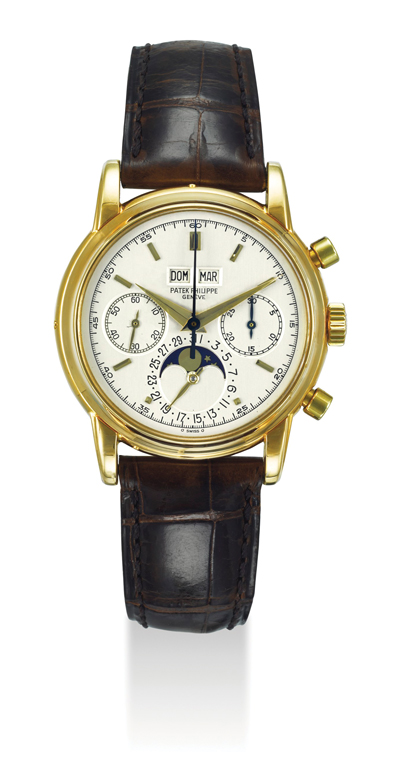
An extremely fine and rare 18-karat gold Patek Philippe perpetual calendar chronograph, ref. 2499/100, manufactured in 1981, was sold by Christie’s for 499,500 USD on March 19th in Dubai.
“First, I think we need more education,” he explains, before pointing to Christie’s efforts in this regard, which include educational seminars, catalogues about Middle Eastern art that tend have a strong educational slant with an abundance of informative notes, and a marketing style that tends to be heavily guiding and explanatory. “We also try to support a lot of literature and lectures about Middle Eastern artists.”
Jeha is referring to educating clients, but then he also cites a lack of formal art education in schools and a shortage of fully-fledged certified programmes in the region, noting a few exceptions. “Abu Dhabi has some good courses and Iran has some really strong art programmes, partly because they have such a long history and tradition with that.”
This lack of knowledge may partly explain why the level of interest in collecting art in the region could be higher, especially on the corporate end. “We need to see more corporate collections. Some of the biggest collections in the world are corporate,” he says, referring to extensive collections like those of AXA, Deutsche Bank, Microsoft and Daimler, which some experts believe can inspire creativity and intellectual stimulation in the workplace, help determine brand image, and even entice potential recruits to come work at a company due to its art collection. “But again, I could probably count on one hand the number or corporate collections in the Middle East. It’s not good enough,” he says. “Corporate collections are a way of supporting the community. You buy art from galleries and the artists and display it publicly, which is a benefit for their employees and the whole community.”
But beyond all that, of course, is the bottom line. The inherent value in collecting art has to be understood first, and then it has to have a solid framework in which to work. To that end, there is a real need in the region for a more active dealer base. “Most big galleries around the world don’t only deal in their own art, they also deal in other people’s art and engage in the secondary market. We need to see the wheels of the secondary market,” he asserts. Then, there are the broader financial structures: Jeha believes that corporations could be incentivised. “Governments need to encourage corporations to collect art. I’m sure they could think of lots of creative ways to do that.”
In the grand scheme of things, evidence points to a growing interest in art and collecting. Although Christie’s global sales declined by 22 per cent last year to about 4.1 billion USD, the company is responding to growing demand for greater access to buying and selling with a new 500-square-metre, two-storey flagship location in Los Angeles, California. This West Coast expansion comes on the heels of the company’s 2016 opening of a new art space in Beijing and the 2014 relocation of its Shanghai presence to the historic Ampire building – part of an effort to capitalise on the Chinese market. After over 250 years in the auction business, the company is exporting its savoir-faire, and reshaping art markets around the world.
“One of the strengths of the auction market is its transparency. When we hold our auctions, it sets a clear benchmark, a track record and a precedent, and that’s extremely important in the pricing of Middle Eastern art. After over ten years of auctions, it has helped create a sustainable market and validated the people who participate,” Jeha reflects.
Ultimately, while Christie’s effect is measurable, its product is somewhat intangible. The company is really just a bar-setting middleman in a realm that is very much subjective. “It’s all about supply and demand,” Jeha concludes. That, and a little bit of schooling.Back in 2007, an untitled painting by Iraqi artist Dia Al Azzawi was sold at a Christie’s auction for 20,000 USD. Fast-forward nine years, and ‘Mawt (Your Wedding is Death)’ by the same artist, fetched a whopping 235,000 USD. That’s a significant and rapid rise in value by most accounts, even when inflation and normal appreciation are factored in. The reason? It might have something to do with Christie’s eleven-year tenure in the region, according to Christie’s Middle East Managing Director & Deputy Chairman Michael Jeha, who has seen this – and many other artists’ – valuation skyrocket since the historic British auction house set up shop in Dubai eleven year ago.
“There’s no doubt that overall values have increased. Not everyone likes that, like everything in life,” he reflects over mint tea at Beirut’s Albergo Hotel. “Some buyers are frustrated that you can no longer get Paul Guiragossian for 15,000 USD.”
But while some art collectors are longing for the past, the upward trend is pleasing a whole new audience, and raising the profile of Middle Eastern art on a global level. It’s all part of a strategy that aims to bring cohesion to the regional art market.
“When we first began, it was a very localised market, Syrians buying Syrian, Lebanese buying Lebanese, Egyptian buying Egyptian. Now everyone is buying each other’s art. We really helped to internationalise the market, which is really the role of Christie’s, to bring Middle Eastern art to a global audience,” explains Jeha, who has been with the company for the last 19 years (the first eight were in London, where he grew up).
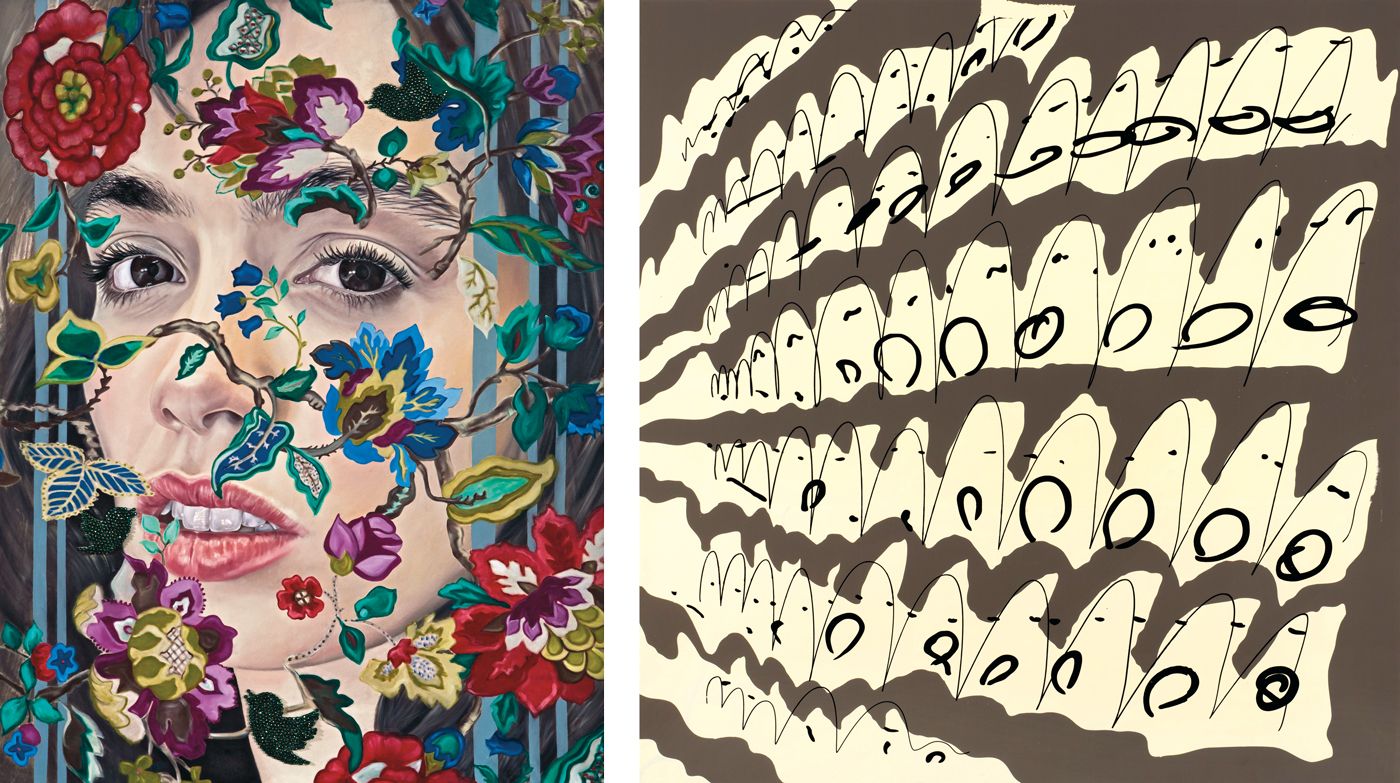
Right: Turkish artist Asli’s Özok’s ‘Rabia’, a 2016 oil painting studded with Swarovski crystals was sold on March 18th for 32,500 USD, attaining more than six times its pre-auction estimate. Left: ‘The Chorus’ by Iranian artist Tala Madani fetched 43,750 USD.
That’s not to say Christie’s move into the Middle East market it was all part of a meticulously planned roadmap. In fact, when it first opened in 2005, Christie’s outpost in Dubai was mainly a way to service Middle Eastern buyers who took part in their UK and US auctions. “I remember in our initial business plan, there was a small paragraph at the end stating that maybe if things went really well, we might start auctions here,” he recalls. And go well, they did. Within a year,
Christie’s Middle East held its first live auction of Middle Eastern art to a room full of enthusiastic collectors, and its most recent Modern & Contemporary Art auction, held in March 2017, reeled in a respectable in 8,079,375 USD in sales. This year also marks five years of stand-alone watch auctions held by Christie’s in the Middle East, a segment that has fuelled and satisfied the growing appetite of clients in the region for vintage watches.
Of course, there’s still plenty of room for growth in this emerging market. “You could sell one painting in New York City that’s worth five years of sales in Dubai,” Jeha reminds us. “There are still things that need to progress to take the market forward,” he continues confidently, in a manner telling of his knowledge and experience stocking the world’s most exclusive art collections.
“First, I think we need more education,” he explains, before pointing to Christie’s efforts in this regard, which include educational seminars, catalogues about Middle Eastern art that tend have a strong educational slant with an abundance of informative notes, and a marketing style that tends to be heavily guiding and explanatory. “We also try to support a lot of literature and lectures about Middle Eastern artists.”
Jeha is referring to educating clients, but then he also cites a lack of formal art education in schools and a shortage of fully-fledged certified programmes in the region, noting a few exceptions. “Abu Dhabi has some good courses and Iran has some really strong art programmes, partly because they have such a long history and tradition with that.”
This lack of knowledge may partly explain why the level of interest in collecting art in the region could be higher, especially on the corporate end. “We need to see more corporate collections. Some of the biggest collections in the world are corporate,” he says, referring to extensive collections like those of AXA, Deutsche Bank, Microsoft and Daimler, which some experts believe can inspire creativity and intellectual stimulation in the workplace, help determine brand image, and even entice potential recruits to come work at a company due to its art collection. “But again, I could probably count on one hand the number or corporate collections in the Middle East. It’s not good enough,” he says. “Corporate collections are a way of supporting the community. You buy art from galleries and the artists and display it publicly, which is a benefit for their employees and the whole community.”
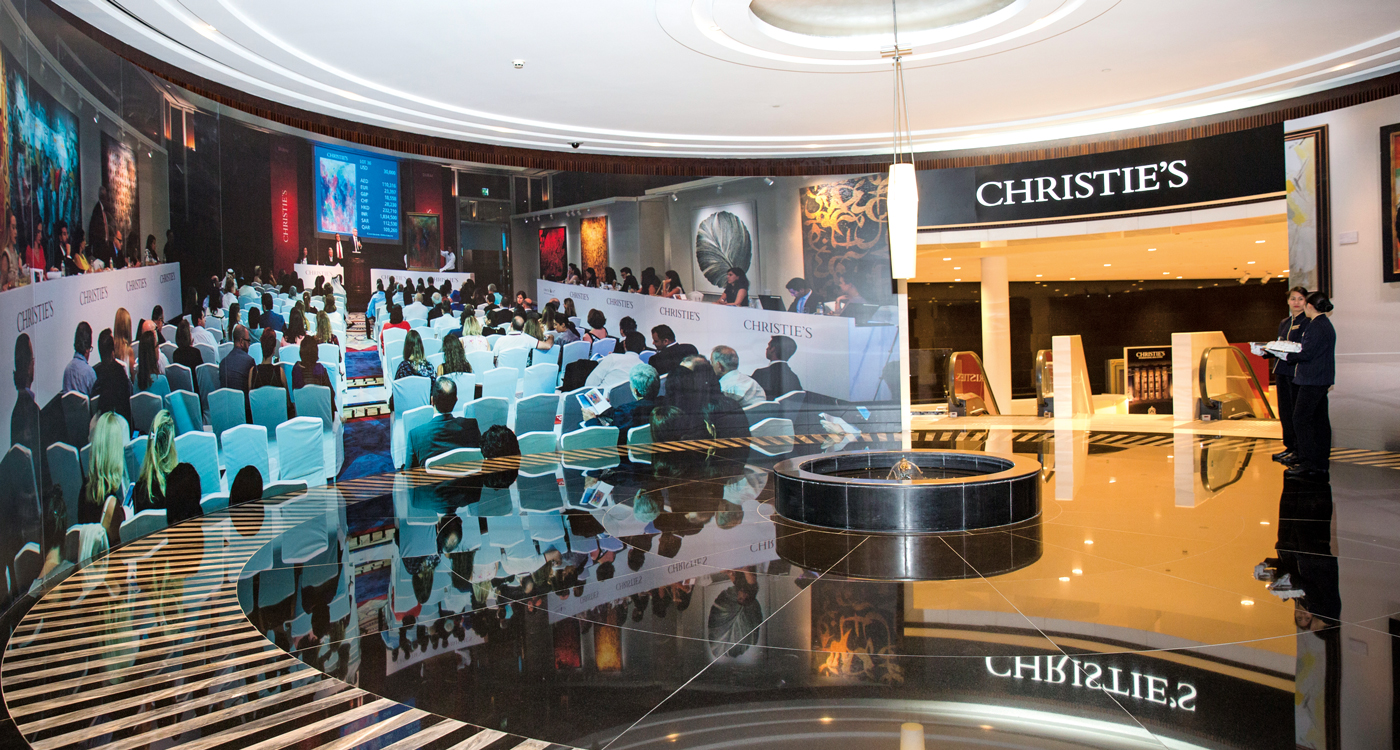
Christie’s holds its Dubai-based auctions at the Godolphin Ballroom in the Jumeirah Emirates Towers Hotel.
But beyond all that, of course, is the bottom line. The inherent value in collecting art has to be understood first, and then it has to have a solid framework in which to work. To that end, there is a real need in the region for a more active dealer base. “Most big galleries around the world don’t only deal in their own art, they also deal in other people’s art and engage in the secondary market. We need to see the wheels of the secondary market,” he asserts. Then, there are the broader financial structures: Jeha believes that corporations could be incentivised. “Governments need to encourage corporations to collect art. I’m sure they could think of lots of creative ways to do that.”
In the grand scheme of things, evidence points to a growing interest in art and collecting. Although Christie’s global sales declined by 22 per cent last year to about 4.1 billion USD, the company is responding to growing demand for greater access to buying and selling with a new 500-square-metre, two-storey flagship location in Los Angeles, California. This West Coast expansion comes on the heels of the company’s 2016 opening of a new art space in Beijing and the 2014 relocation of its Shanghai presence to the historic Ampire building – part of an effort to capitalise on the Chinese market. After over 250 years in the auction business, the company is exporting its savoir-faire, and reshaping art markets around the world.
“One of the strengths of the auction market is its transparency. When we hold our auctions, it sets a clear benchmark, a track record and a precedent, and that’s extremely important in the pricing of Middle Eastern art. After over ten years of auctions, it has helped create a sustainable market and validated the people who participate,” Jeha reflects.
Ultimately, while Christie’s effect is measurable, its product is somewhat intangible. The company is really just a bar-setting middleman in a realm that is very much subjective. “It’s all about supply and demand,” Jeha concludes. That, and a little bit of schooling.


